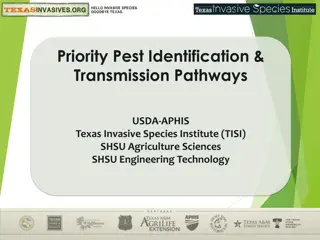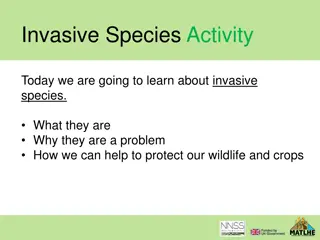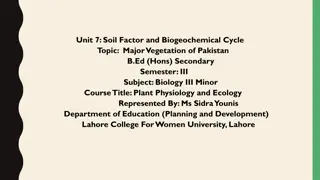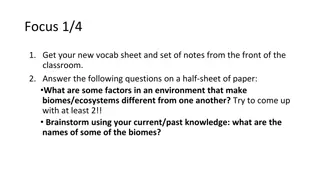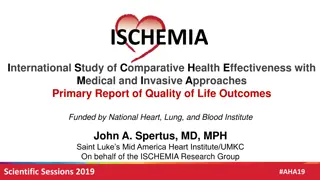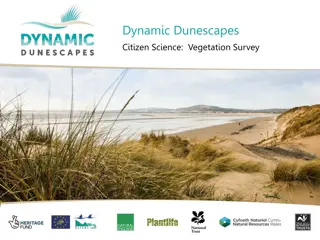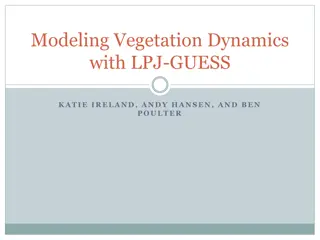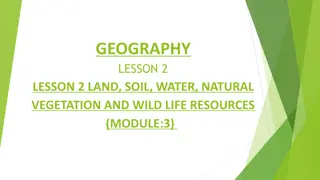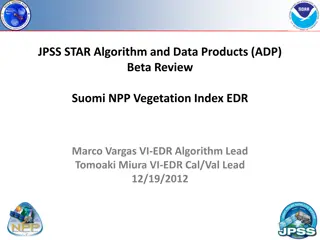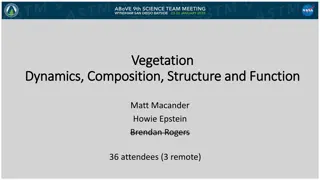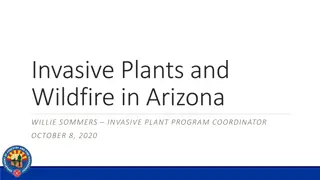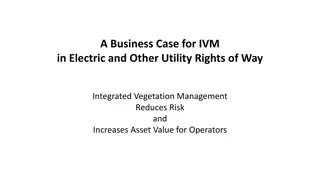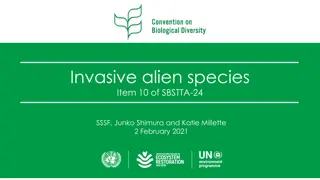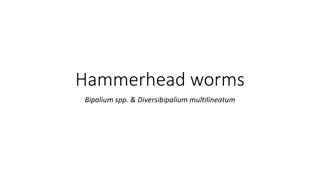Understanding Invasive Plants and Vegetation Management
Explore the world of invasive plants with a focus on policy, restoration, and management strategies. Learn about the characteristics that make a plant invasive, federal definitions, and the impact of climate change on invasive species. Dive into case studies on Spartina species, Scotch broom removal methods, and why it's crucial to control invasive plants. Discover various removal techniques including manual, mechanical, and biological methods. Gain insights into the Washington Invasive Species Council's efforts in combating invasives.
Download Presentation

Please find below an Image/Link to download the presentation.
The content on the website is provided AS IS for your information and personal use only. It may not be sold, licensed, or shared on other websites without obtaining consent from the author. Download presentation by click this link. If you encounter any issues during the download, it is possible that the publisher has removed the file from their server.
E N D
Presentation Transcript
Policy and Restoration in Vegetation Management Allison Smith Evan Mangold Scott Stavely Marissa Whisman Tim Rogers Jennie Husby
What makes a plant invasive? Allison Smith Fall 2010
Spartina alterniflora and Spartinapatens Spartina restoration, Louisiana Spartina eradication, Washington
Federal Definition of Invasive Executive Order 13111: a species that is non-native to the ecosystem under consideration and whose introduction causes or is likely to cause economic or environmental harm or harm to human health.
Washington Invasive Species Council Established in 2006 by SB 5385 Defines invasives as nonnative organisms that cause economic or environmental harm and are capable of spreading to new areas of the state. Prioritizes by impact and by ability to prevent
Will Climate Change Make Us Consider Amnesty for Invasive Plants?
Scotch Broom Removal Methods Evan Mangold
Quick Facts Introduced in the 1800 s Average height of 3-5 feet Average lifespan of 17 years Durable seed bank
Why it Should be Removed Serious threat to native species Dominates over other plant species Makes reforestation difficult Spreads easily
Manual and Mechanical Methods Pulling Wrench-removal Brush-hog removal Saw cutting
Biological Methods Stem Miner Seed Beetle Broom Twig Moth Seed Weevil Grazing
Chemical Methods Can be the most effective but also the most harmful Notorious for damaging non-target species Rely greatly on appropriate timing and application
Controlled Burns Best suited for large patches Harms non-target species Difficult to plan
Restoration Applications for Smith Prairie By Scott Stavely
Puget Lowland Prairies History Began forming after the Fraser glaciation, 10,000ybp Outwash soils Climate shift Natural burn cycle Human presence Burned yearly in the fall Food and materials 150,000-180,000 acres Biodiversity Aquifer Recharge Smith Prairie ~1000 original acres Lower Skagit tribe Farms, NOLAF, PRI
Now what? How to do a proper restoration? History Natural and anthropogenic Extent, species composition, burn intervals Actions Species removal and reintroduction Strengths and weaknesses Tools and Techniques What is available Cost, scale, effectiveness, appropriateness, time
Most important tool Fire Original condition Top kill, duff removal, heat smoke Quick, few men, inexpensive Relatively safe
Herbicides Post-emergent Broad large areas of exotics Narrow spectrum mixed natives, exotics Pre-emergent Seed banks, annuals Concerns
Other methods Mowing, raking Plowing Solarization Sugar and Charcoal Manual
Replanting Seed cast Seed drill Plugs
The Remnant Seed collection As much as is ecologically sound Burn in the fall Too small Manual removal Volunteer work day Woody specific herbicide Snowberry, Nootka rose Sugar and Charcoal Remove excess nitrogen
The Rest Burn blocks of 15-20 acres burned in the spring every year. Invasive control Blackberry, thistle, burl chervil, mustard, salsify Solarization random placement of plots in burn blocks each year Seed cast with predator exclusion
Breaking Ground In Riparian Buffer Restoration and Its Role in Nitrate Removal By Marisa Whisman Nitrate (NO3) is the most common groundwater contaminant in the U.S., and one of the most common nonpoint sources of river pollution Concentrations > 10 mg per liter can be harmful or fatal to humans and wildlife Riparian buffers can serve two functions to nitrate reduce nitrate pollution: Uptake for nutrient use intercept runoff before it reaches the water Remove nitrates from ground and subsurface water through denitrification (Convert NO3 N2O, NO, or N2 gas through root/microbial interaction) Woody plants more effective at nitrate removal than forbs or grasses because they supply more carbon to denitrifying microbes
Flow pathway of nitrate runoff: Surface flow, subsurface flow, plant uptake and conversion to gas
The Calapooia River is one of the major tributaries of the Willamette River, Oregon
Grass seed field with thin riparian riparian buffer, Calapooia River
How can conifers help riparian ecosystems adapt to climate change?
Water Used by Trees Photo: Brian Lockhart
Effects of CO2 Enrichment on Nitrogen Fixation Graph: Bruce Hungate et al., 2004 Photo: D. L. Ennis
Management of Pollinators in the Puget Lowland Prairies Jennie Husby http://www.google.com/imghp?hl=en&tab=wi
Causes of Disruption to Pollinator Habitat: Fragmentation Chemical Pesticides and Herbicides Non-native Species
Ranchers Local Farmers Private Citizens http://www.google.com/imghp?hl=en&tab=wi
Political Ecology = dealing with environmental issues in the context of the largest system


